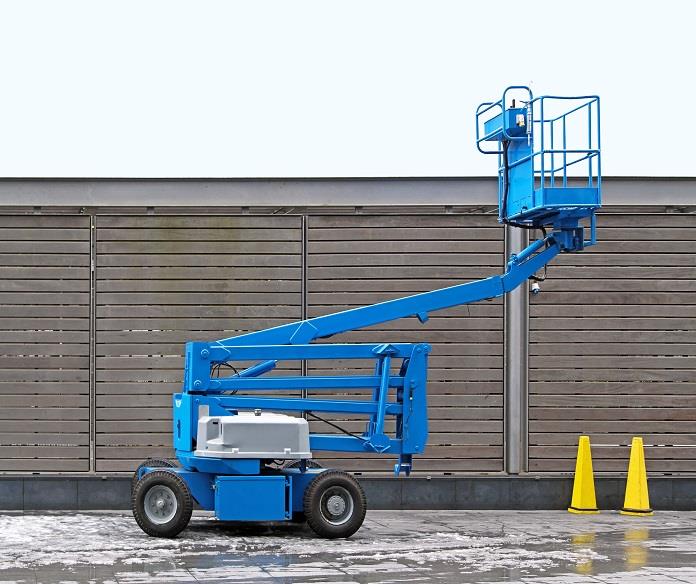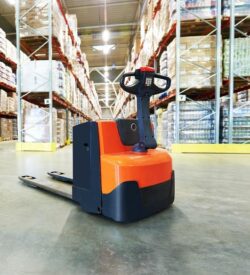AERIAL BOOM LIFT (GENIE BOOM) TRAINING & CERTIFICATION
The Aerial Boom Lift (Genie Boom) safety courses from Safety First Training are OHSA based programs that teach the different types of aerial platforms and components, pre-operation inspection, safe operation requirements including setup, operating and moving the machine and hazard avoidance. Zoom Boom Operator Training is offered around Southern Ontario including Toronto, Mississauga, Brampton, Markham, Oakville, Burlington, Hamilton, Niagara, Kitchener, Waterloo, Cambridge. We also offer Train the Trainer courses for Aerial Genie Boom Lifts.
Note – we do not provide public sessions for individuals
Want to take the Online course instead?
View Online CourseDescription
Aerial Boom Lift (Genie Boom) Training
Our Aerial Boom Lift (Genie Boom) training program is meticulously crafted to meet the highest safety standards. We adhere to the CSA Standard CSA-B354.2-01 (R2013), which outlines the essential knowledge, practical skills, and evaluation criteria for aerial lift operators. This standard ensures that operators demonstrate a competency level equal to or exceeding industry benchmarks during practical evaluations.
Additionally, our training aligns with the Occupational Health and Safety Act, REGULATION 851 for Industrial Establishments, focusing specifically on aerial lift safety protocols.
Course Outline:
- Introduction to the Course
- Relevant Government Legislation
- Aerial Lift Safety Video Presentation
- Roles and Responsibilities of Workers, Supervisors, and Employers
- Identification of Different Types of Aerial Lifts
- Pre-operational Safety Checks
- Inspection, Maintenance, and Record-keeping Procedures
- Understanding Lift Capacity and Load Limitations
- Fall Protection Equipment Requirements and Inspection
- Implementation of Safe Operating Procedures
Operating a Genie Boom Aerial Lift demands strict adherence to safety protocols. To ensure a secure working environment, here are essential safety guidelines to follow:
- Pre-Operation Inspection: Learn to conduct a thorough pre-operation inspection to ensure the lift is in optimal condition. Check for any signs of damage, loose parts, or leaks, ensuring a safe working environment.
- Operator’s Manual Review: Explore the operator’s manual to understand weight capacities, usage guidelines, and emergency procedures. This knowledge empowers you to operate the lift with precision and adherence to manufacturer specifications.
- Personal Protective Equipment (PPE): Prioritize safety by wearing the necessary PPE, including a hard hat and safety harness. We emphasize the importance of PPE in preventing accidents and protecting yourself on the job.
- Surroundings Check: Before operating the lift, assess the surrounding area for potential hazards such as power lines, obstructions, or uneven terrain. This proactive approach minimizes risks and enhances workplace safety.
- Secure Work Area: Implement measures to secure the work area, such as using barricades or warning signs, to prevent unauthorized access and ensure pedestrian safety.
- Level Ground Usage: Ensure the lift is on level ground to prevent tipping, utilizing outriggers or stabilizers when necessary. Our training emphasizes the importance of stability for safe lift operation.
- Proper Control Usage: Master the use of lift controls to execute smooth and deliberate movements, reducing the risk of accidents. We stress the importance of keeping hands and feet clear of moving parts at all times.
- Weight Capacity Awareness: Understand and adhere to the manufacturer’s weight capacity guidelines to avoid overloading the lift. Overloading poses significant safety risks, including tipping and equipment failure.
- Alertness and Focus: Stay alert and focused while operating the lift, avoiding fatigue, impairment, or distractions. Maintaining mental sharpness is crucial for safe and efficient operation.
- Emergency Preparedness: Develop a comprehensive rescue plan for emergencies, including communication protocols, rescue kits, and trained personnel. Being prepared ensures a swift and effective response to any unforeseen situations.
By using these safety tips, you can help keep yourself and others from getting hurt when using a genie boom overhead lift.
Train the Trainer – Aerial Genie Boom Lift Certification
Our specialized Train, the Trainer certification program for Genie Boom Lift Training, enables clients to acquire the skills needed to deliver OHSA-compliant training directly to their staff. This approach is particularly cost-effective for training individual employees or groups, eliminating the need to engage external training services. We equip you to become a proficient safety trainer in operating Aerial Genie Boom Lifts within your organization.
The Train the Trainer Course Package includes:
- Professional Instruction Guide
- Learner’s Course Handout
- Assessment Forms
- Wall Certificate Template
- Instructor’s Presentation
- Examination and Answer Sheet
- Supplementary Course Video
- Wallet Card Template
Aerial Lift Overview
Aerial Boom Lift (Genie Boom)
- Commonly referred to as a Telescopic boom.
- Ideal for narrow spaces in both construction and industrial settings.
- Features adjustable drive speeds for ease of operation.
- The Genie Boom, a powered vehicle with a platform surrounded by safety rails, facilitates movement within warehouse environments. Its platform elevates vertically, enabling workers to access elevated areas that are typically unreachable. Operators of the Genie Boom must undergo training in fall protection safety due to the heights involved and must always wear safety harnesses.
Scissor Lift
- Also known as an airline, an advanced facility, or an advanced transportation facility.
- Primarily used for routine maintenance tasks.
- Designed for easy setup and operation by an individual.
Bucket Truck
- Utilized for raising and lowering personnel to heights unattainable by ladders.
- Some models feature a single or double-arm boom.
- Constructed from materials such as wood, fibreglass, metal, or reinforced plastic.
Safety First – Always!
Consistently…
- Comply with your provincial Occupational Health and Safety Regulations
- Read and adhere to your employer’s Health and Safety procedures
- Follow the guidelines in any equipment Operator’s and Manufacturer’s Manuals
- Utilize appropriate Personal Protective Equipment (PPE)
- Obey the equipment’s lifting capacity information and heed warning signs
- Perform pre-shift and pre-start-up inspections, along with visual checks
- Report any missing equipment or protective device or any defects
- Test all equipment functions to confirm they are working correctly
- Avoid dangerous areas, including steep slopes, grades, and drop-offs
- Use the equipment only for its intended and designed purposes
- Ensure you are adequately trained and authorized to operate the equipment
For a basic safety overview, click here to watch a general safety video for Aerial Boom Lifts.
Duration:
The course lasts up to 8 hours, varying with the experience of the participants.
Assessment:
Participants must achieve at least a 75% passing score to qualify for certification.
Completion:
After successfully finishing this course, participants will be awarded a PDF wall certificate and a PDF wallet card for their records.
Click here for a general safety video for Aerial Boom Lifts
Duration:
Up to 8 hours depending on participants’ experience levels
Assessment:
A passing grade of 75% is required in order to receive a certificate
Completion:
Upon successful completion of this course, participants will receive a PDF wall certificate and PDF wallet card for their records
Contact us today to learn more about the course and the topics covered.




